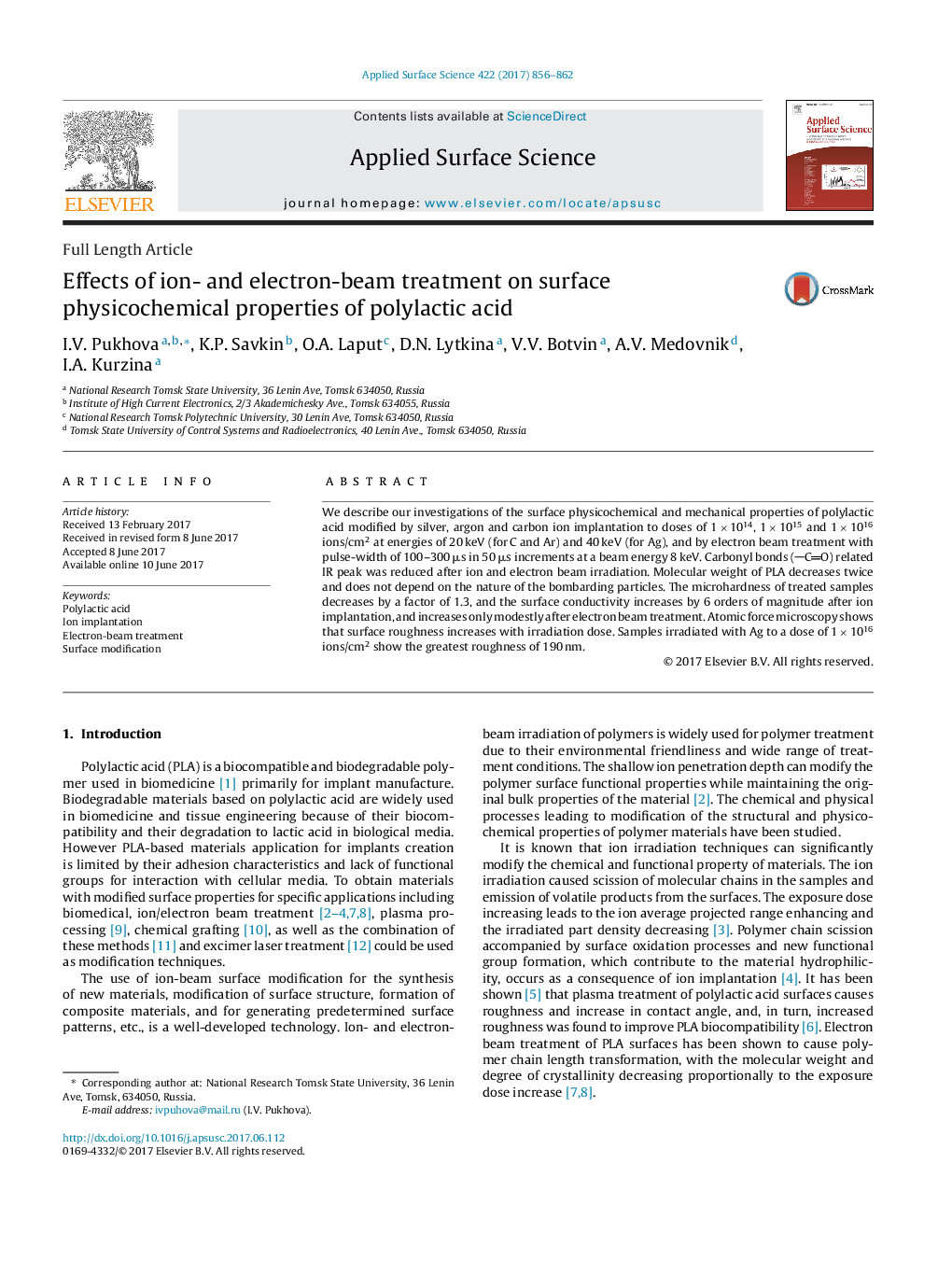| کد مقاله | کد نشریه | سال انتشار | مقاله انگلیسی | نسخه تمام متن |
|---|---|---|---|---|
| 5347607 | 1503549 | 2017 | 7 صفحه PDF | دانلود رایگان |
- Carbonyl bonds (CO) contain reduce after ion and electron beam irradiation.
- Molecular weight decreases twice.
- Microhardness of treated samples decreases by a factor of 1.3.
- Surface conductivity increases by 6 orders of magnitude after ion implantation, and increases only modestly after electron beam treatment.
- Surface roughness increases with irradiation dose.
We describe our investigations of the surface physicochemical and mechanical properties of polylactic acid modified by silver, argon and carbon ion implantation to doses of 1 Ã 1014, 1 Ã 1015 and 1 Ã 1016 ions/cm2 at energies of 20 keV (for C and Ar) and 40 keV (for Ag), and by electron beam treatment with pulse-width of 100-300 μs in 50 μs increments at a beam energy 8 keV. Carbonyl bonds (CO) related IR peak was reduced after ion and electron beam irradiation. Molecular weight of PLA decreases twice and does not depend on the nature of the bombarding particles. The microhardness of treated samples decreases by a factor of 1.3, and the surface conductivity increases by 6 orders of magnitude after ion implantation, and increases only modestly after electron beam treatment. Atomic force microscopy shows that surface roughness increases with irradiation dose. Samples irradiated with Ag to a dose of 1 Ã 1016 ions/cm2 show the greatest roughness of 190 nm.
Journal: Applied Surface Science - Volume 422, 15 November 2017, Pages 856-862
